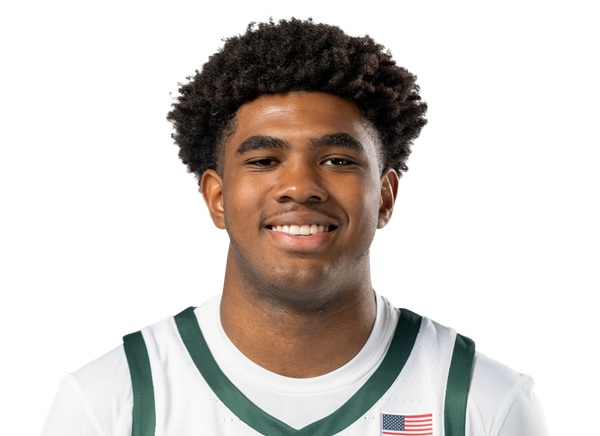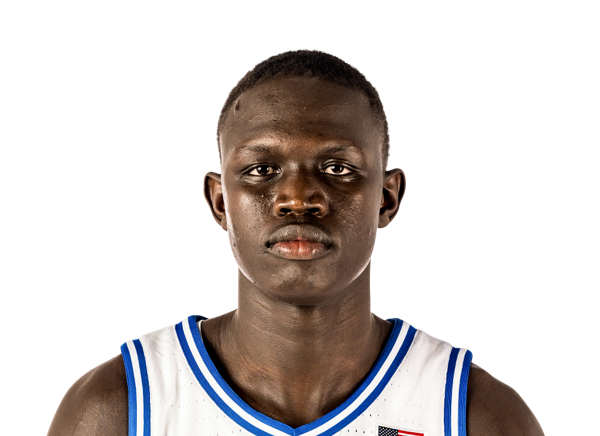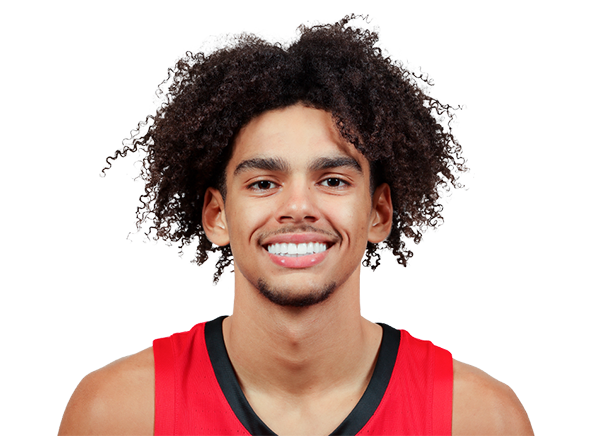Full Analysis
Offense
Jase Richardson thrives within the flow of an offense, playing with polish and efficiency that reflect both NBA lineage and a mature grasp of pace. His offensive game is built around economy and precision: he doesn’t waste dribbles, he plays under control, and his decision-making rarely compromises possessions. Despite limited usage (15.7% USG), he posted an impressive 62.4 TS% while averaging 12.1 PPG, making the most of his touches through elite shot selection and a translatable scoring package.
His off-ball scoring tools are excellent. Richardson is a 41.2% three-point shooter on modest volume (3.2 3PA/G), excelling on catch-and-shoot looks, relocations, and movement off screens. His jumper is compact, repeatable, and well-suited to spacing-oriented NBA systems. When defenders close out, Richardson counters with savvy: pump-fakes, decisive straight-line drives, and floaters in the lane. His midrange touch is particularly advanced, featuring feathery fadeaways and smooth floaters often delivered out of pick-and-rolls or short bursts of creation.
While not a classic lead guard, Richardson handles secondary pick-and-roll duties with poise. He lacks advanced vision or creativity as a passer, but his reads are timely and safe. With 1.9 assists to just 0.8 turnovers per game, he keeps the offense humming and doesn't overextend himself. However, this restraint also reflects his limitations, as his handle is competent but lacks shake, and his right-hand usage is alarmingly low, making him very left-hand dominant. This creates questions about scalability and how well he can operate against NBA defenders who will sit on his strong hand and force him into uncomfortable situations.
Richardson is more of a play finisher than initiator, and while his craft and touch allow him to finish around the rim (58.1% on 2P in Big Ten play), he doesn’t pressure the paint like an explosive guard would. He’s also not a proven isolation scorer, relying more on system play and advantages created by teammates.
Defense
Defensively, Richardson compensates for his average physical tools with effort, awareness, and technique. Despite being just over 6-feet tall and under 180 pounds, he’s a high-motor defender who stays in a stance, contests shots, and plays with real intensity. He’s sharp off the ball, tagging cutters, rotating on time, and fighting through actions. He rarely gambles or makes reckless decisions, and consistently fulfills his role in team schemes.
However, his size and strength limitations pose real challenges. He can be screened out of plays and lacks the functional strength to hold ground when guarding through contact. In off-screen and pick-and-roll scenarios, opponents shoot well against him, often due to his inability to navigate screens cleanly or recover quickly. These weaknesses limit his ability to be a reliable point-of-attack defender, especially if tasked with guarding larger or more physical guards.
Still, Richardson isn’t a complete liability. His high floor IQ and motor ensure he competes, even if his upside on this end is capped. His competitiveness and attentiveness are core traits that will help him carve out a role, but he will likely need to be paired with a bigger, stronger perimeter defender in the backcourt.
Looking Ahead
Jase Richardson is one of the most efficient low-usage guards in the class. He plays smart, knows his limitations, and brings tangible value as a shooter, secondary ball-handler, and two-way effort guard. His basketball upbringing is evident in his maturity and steadiness, traits coaches and front offices consistently covet.
The main developmental concerns are scalability and skill elasticity. Can he create offense against length and pressure? Can he learn to use his right hand to finish and create? And can his passing evolve from reactive reads to proactive manipulation?
If those questions remain unresolved, Richardson still has a path as a dependable combo guard off the bench, offering shooting, secondary pick-and-roll ability, and high-level execution. But if the handle tightens, the ambidexterity improves, and the passing grows, he could develop into a legitimate starting-caliber guard, especially in systems that prioritize structure and off-ball movement.
Projected NBA Role
Polished, efficient combo guard who excels in structured systems as a low-mistake, high-IQ connector; projects as a floor-spacing secondary ball-handler who thrives off movement and in second-side actions. While unlikely to be a full-time lead guard, he can elevate bench units or complement primary creators in dual-guard lineups, with starter equity if his handle, ambidexterity, and playmaking evolve.
Swing Skill
Handle and Right-Hand Development: Currently too left-hand dominant, must improve ambidexterity and dribble craft to create vs pressure;
Scalability and Playmaking: Needs to grow as a manipulative passer and expand pick-and-roll reads;
Point-of-Attack Defense: Undersized and lacks screen navigation tools, must improve strength and technique to stay playable against guards



